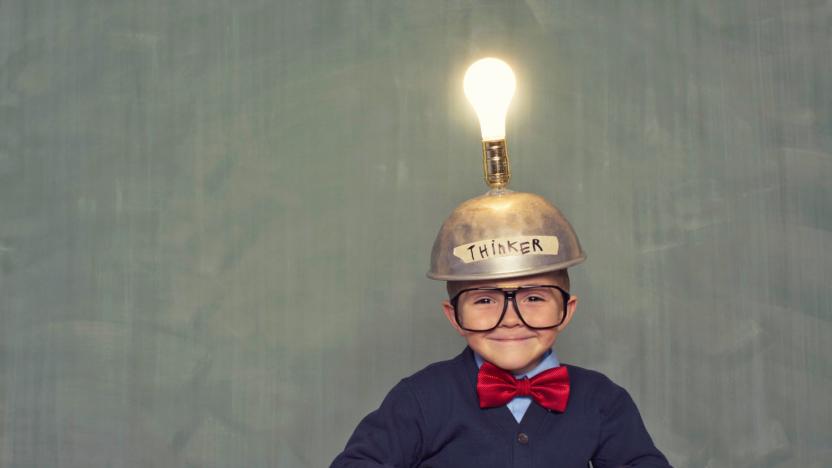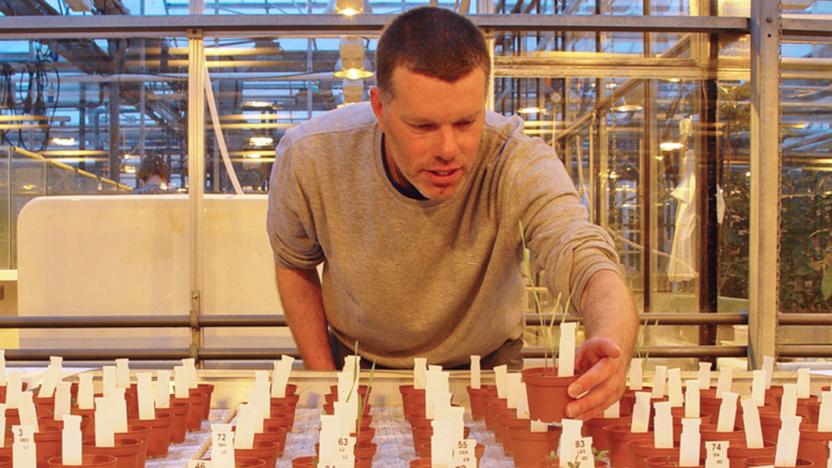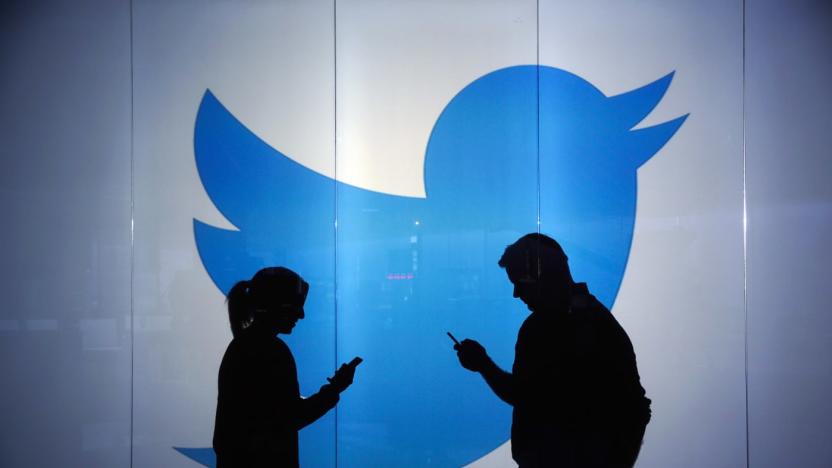experiment
Latest

Science proves people lie for selfish reasons
How honest are you, really? Would you be open to a brain treatment that might make you act a little more truthful? I'm asking because researchers from the ever-productive University of Zurich tried an experiment to see if they could influence behavior with "transcranial direct current stimulation (tDCS)," a noninvasive type of electrical pulse that apparently makes brain cells more active. The scientists targeted the right dorsolateral prefrontal cortex (involved with risky and moral decision making) with the tDCS to see how honest people would be when reporting dice rolls.

Mice brains store backup copies of memories
Turns out that even the human brain might use redundancy when it comes to storage. New research out of the Riken-MIT Center for Neural Circuit Genetics suggests that memories are stored in two places in the brain: the hippocampus for short-term and the cortex for longterm. Previously, the prevailing theory was that once a memory was formed in the hippocampus, it would then move to the cortex for storage. But that may not be the case, according to a paper published in Science.

NYT: Snapchat built its own drone
Snapchat's second or third reinvention was to describe itself as a "camera company," but really it wants to become a hardware maker. At least, that's the theory coming out of the New York Times, which has spoken to three anonymous employees who claim the startup has been working on a photography drone.

Scientists reverse Alzheimer's-like symptoms in mice
Scientists have discovered a way of counteracting the proteins that cause Alzheimer's-like symptoms including memory loss. In mice, at least. Whereas other treatments have focused on beta-amyloid clumps (which the University of Michigan recently discovered how to "fingerprint"), researchers at Washington University in St. Louis, Missouri focus on tau protein tangles. Specifically, the genes that produce them.

Scientists prove that microbes could survive on Mars
Microbes could survive on Mars despite its harsh environment, a year-long experiment conducted by a team of astrobiologists from the University of Arkansas in Fayetteville has proven. Sure, that's a little less exciting than proving that little green men could have lived on the red planet. But it still brings up the possibility that there may have been life on Mars at one point, no matter how small. The scientists were compelled to conduct a study when Curiosity detected the presence of methane. Most of the methane on Earth is produced by living organisms, and team leader Rebecca Mickol said the "the same could possibly be true for Mars."

Facebook is asking users' help to ID misleading news
The latest addition to Facebook's never-ending parade of experimental features looks like it's all about fake news. Chris Krewson, an editor for Philadelphia publication Billy Penn, has spotted a survey module right underneath a post by the Philadelphia Inquirer about a white nationalist (and well-known pistachio vendor) losing her job. The survey asked: "To what extent do you think that this link's title uses misleading language?" There were five choices to choose from ("Not at all," "Slightly," "Somewhat," "Very much" and "Completely"), but the module could clearly be dismissed with by clicking on an "X" button.

Google AI experiments help you appreciate neural networks
Sure, you may know that neural networks are spicing up your photos and translating languages, but what if you want a better appreciation of how they function? Google can help. It just launched an AI Experiments site that puts machine learning to work in a direct (and often entertaining) way. The highlight by far is Giorgio Cam -- put an object in front of your phone or PC camera and the AI will rattle off a quick rhyme based on what it thinks it's seeing. It's surprisingly accurate, fast and occasionally chuckle-worthy.

Microsoft Research has two types of touch for VR haptics
Virtual reality is one of the most immersive technologies available today. That is until the illusion shatters when you instinctively reach out to touch something and are met with a one-size-fits-all haptic response or no feedback at all. Microsoft Research (PDF) might have the solution to that. Rather than air-based haptics like we've seen before, "NormalTouch" and "TextureTouch" use handheld devices to simulate touching things while in VR -- no bodysuit required.

Four crops grown in simulated Martian soil are safe to eat
We're still not sure if we can Mark Watney our way through a Martian mission, because soil on the red planet contains heavy metals toxic to humans, including lead and arsenic. A team of scientists from the Wageningen University in the Netherlands, however, found out that radishes, peas, rye and tomatoes grown in Martian soil are safe to eat after years of research. The scientists have been growing different types of plants in soil that NASA developed to simulate what's found on the red planet since 2013. While they haven't exactly eaten any of them yet -- and team leader Wieger Wamelink admits radishes are still best grown on Earth -- they confirmed that these four can grow on Mars without absorbing dangerous levels of heavy metals.

Twitter is experimenting with adding 'Moments' to your timeline
Twitter is testing adding Moments directly to your timeline. The feature that highlights trends and news items on the social network is appearing in a carousel post that can be swiped horizontally. While only an experiment right now, this early exploration of dropping into user feeds shows just how important the trending-topic element is to the company.

Google Science Journal studies the world through your phone
Are you (or your kid) curious about the world around you? Google wants to help. It just launched Science Journal, an Android app that helps you perform (and comment on) simple science experiments. The app can record light, motion and sound levels using only your phone's sensors, letting you study everything from a light bulb's brightness to the acceleration in a jump. It's easy to kick things up a notch, though. You can connect Arduino-powered sensors, and Google is partnering with Exploratorium to offer starter kits to help budding scientists. Science Journal is free, so there's no harm in giving it a try -- even if you're a full-fledged adult, you might learn something.

Twitter is testing stickers you can add to photos
Twitter is struggling to attract new users, so it's looking to other social networking apps for ideas. As Recode reports, the company is testing a new sticker feature similar to Facebook, allowing users to spruce up their photos with colorful, customizable additions. One such tester, @XBLFoxes, shared a screenshot with the new sticker option in the right-hand corner of Twitter's photo editor. The idea being, of course, that it could encourage people to tweet more photos and, in response, receive more likes, retweets and replies from other users. All of which would help Twitter to grow.

The next big thing in smartphones is uncertainty
You've probably noticed something about smartphones. They haven't been exciting lately. Chances are, your current smartphone looks and works a lot like your last one. Your next will probably seem pretty familiar, too. But there are signs that smartphones, and the ways we use them, could be about to significantly change -- even if no one can quite agree on exactly how.

MIT's 'Galileo' matches humans at predicting how things move
The human brain is able to quickly predict how objects will react in any given scene. When you drop a ball, for instance, you have some idea of how high it'll bounce based on its materials, size and the surface it's interacting with. Scientists are now trying to replicate this "intuitive physics engine" with technology and, in basic scenarios, are finding some success. Researchers at MIT's Computer Science and Artificial Intelligence Lab (CSAIL) have developed "Galileo," which uses a combination of videos, 3D physics modelling and deep-learning algorithms to predict simple experiments "with an accuracy comparable to human subjects."

NASA to test sugary bacteria as space-based power source
Following its successful harvest of red leaf lettuce, NASA has announced plans to launch genetically engineered bacteria into orbit to see if they can be harnessed by future astronauts as potent survival resource. The experiment is scheduled to take place in 2017 and will study the genus Anabaena. The sugars that these cyanobacterium photosynthesize can be fed to other genetically-modified bacteria in a system the agency calls PowerCell. These second-stage bacteria would, in turn, generate chemicals, food, fuel and even medicine for far-flung astronauts. "The first pilgrims who came to the Americas didn't bring all their food for the rest of their lives," Lynn Rothschild of NASA's Ames Research Center, said in a statement. "You need to live off the land."

Astronauts capture stunning 4K video of antacid bubbles aboard the ISS
NASA released 4K video of astronauts aboard the International Space Station experimenting with water, antacid and food coloring to create incredible, fizzing aqueous spheres in the zero-G environment. The ISS crew captured the footage with a Red Epic Dragon camera, which NASA is evaluating for use in monitoring scientific experiments, celestial phenomena and and vehicle operations. According to the space agency, this is among the first such footage of its kind. We can only hope it won't be the last.

Google's Android Experiments show what your devices can do
Google has Chrome Experiments to showcase what's possible in its web browser, so it stands to reason that there should be an equivalent for Android, doesn't it? Sure enough, the folks in Mountain View have launched an Android Experiments gallery that demonstrates what Google-powered mobile and wearable devices can do. In many cases, the 20 inaugural experiments take direct advantage of sensors and remote connections. Tilt (above) uses motion sensors to recreate the classic put-the-ball-in-the-hole game, while IOIO Plotter draws flip charts through an Android-controlled board. On Android Wear, the Time Mesh watch face twists and bends based on your movement. The hope is that app makers will use these experiments as springboards for their own ambitious projects -- if you notice that Android apps are markedly more creative in the near future, you'll know who to thank.

NASA's version of 'Shark Tank' results in six aviation moonshots
NASA wants to change the way planes fly. As part of a new Convergent Aeronautics Solutions project, the agency's innovators recently formed teams to pitch their wildest ideas to a jury. Out of the 17 teams that presented their aviation-transforming studies to a panel of NASA managers, six teams secured funding for their research. While the process seems an awful lot like a VC funding round, according to program manager Doug Rohn, no monetary return on the investment is expected. The program is designed to back seemingly improbable ideas that might lead to solutions to the problems that plague aviation.

BBC trials a way to explain complex backstories in its shows
Most of the BBC's programming is only available for 30 days on iPlayer, so trying to keep up with long-running and complicated TV shows can be a pain. Want to remember how River Song fits into the Doctor Who universe, but don't have the DVD box sets to hand? Your best option is normally to browse Wikipedia or some Whovian fan sites. To tackle the problem, the BBC is experimenting with a site format called "Story Explorer," which could explain storylines and characters for some of its most popular shows. Today, the broadcaster is launching a version for its Home Front radio drama with custom illustrations, text descriptions and audio snippets. More importantly, the key events are laid out as simple, vertical timelines so that you can easily track the show's wartime chronology.

Facebook tweaks your newsfeed by how long you read each post
In an unsurprising revelation, it turns out your Facebook news feed is watching you almost as much as you watch it. The Menlo Park-based company announced today that it is "improving" its news feature by taking into account not just whether someone liked or commented on an article but also by how much time they spent reading it. "Just because someone didn't like, comment or share a story in their News Feed doesn't mean it wasn't meaningful to them," Facebook explains."There are times when, for example, people want to see information about a serious current event, but don't necessarily want to like or comment on it."








